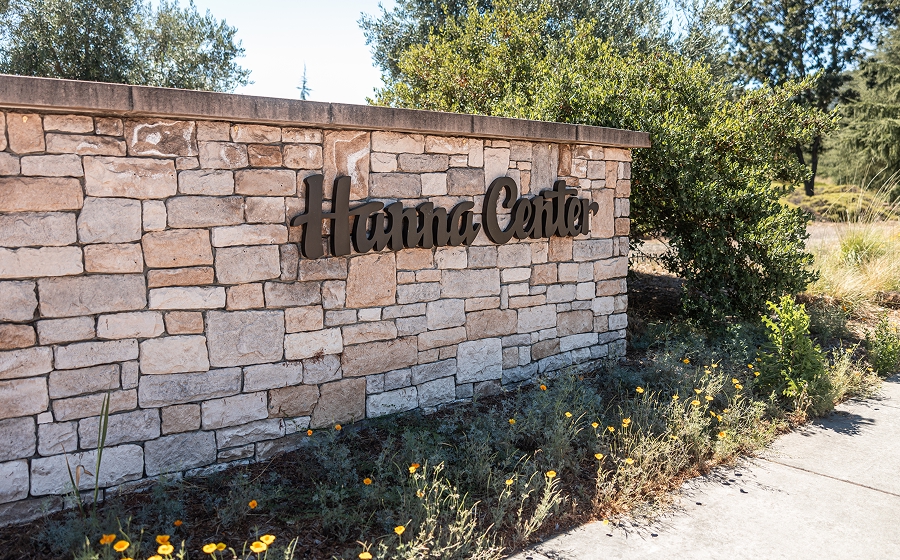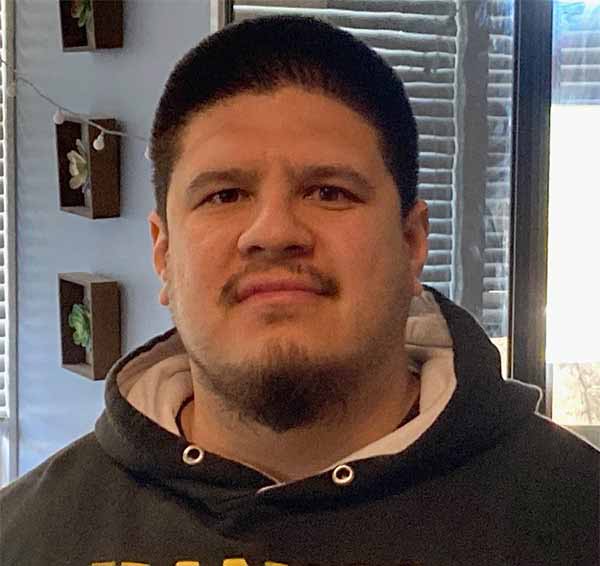Coordinator for the Alverno House
Hanna’s Residential Program plays a large role in the trauma-informed care and character development of our youth, responsible for all aspects of the boy’s days and nights outside of school hours. Structure, accountability, and building community are core components of the program, as is creating pathways for a brighter future through strong role modeling.
Anthony Garcia has been with Hanna for more than five years, starting as a youth counselor, and now working as the supervisor at one of the residential homes on campus. In his role, he gets the most satisfaction when he is successful in opening up a student’s eyes to consider something new. “Introducing a different hobby, sport or even another way of thinking about something can light them up,” he says. “It’s still a thrill for me – seeing their eyes open up in response to something they’ve never seen or done before.”
The boys, aged 14-18 years old, are up at 7 a.m.; each of them has a job to complete in the house before getting ready for school. They then head down to the dining hall; say morning grace together and then get in line for breakfast. Some of the boys work in the kitchen, either serving or cleaning up after meals, for an hourly wage. Phones are locked up at the house during the school day; if they haven’t completed their chores, their phones will stay off-limits until their work is done.
“If they’re not pulling A’s or B’s,” says Anthony, ‘they need to finish their homework before they get their phones. It can be challenging, as all they want to do right after school is get on their phones. I’ll tell them, ‘Sorry, you have to wait.’”
On Mondays and Wednesdays, they all participate in an after-school activity together. It could be board games, basketball, taking a walk around campus, or something more personal, like journaling. “I’ve even tried meditation and stretching,” says Anthony. “Not a big hit.”
Anthony is also responsible for the youth counselors, who rotate shifts in the residences so at least two are always present, 24/7, 365 days a year. “The boys know that we are always available for them, so if they get sick in the middle of the night, we’re there, just like a parent, to make sure they’re safe.”
The boy’s backgrounds are all different – some come from typical middle-income homes, with a mom and dad, while others may come from the urban core, and not have both parents, or any family at all. Some have experienced the incarceration of a parent, mental illness challenges, poverty, abuse, and more. The commonality across the board is that they’ve all experienced some sort of trauma. “Some of the personalities conflict,” says Anthony, “but for the most part, it’s a really strong community.”
The challenge for many of the students is ‘breaking habits that were very normal for them’ prior to coming to Hanna. “The boys may have been exposed to family members regularly using substances in the home, or their dad or uncle was in a gang, so they are used to a lifestyle that comes with gang activity,” he says. “They may think they’ll follow in those footsteps, but I’ll always point out other paths for them to consider. “I’ll say, ‘what about college, or a career in a trade that Mr. Snowden (Hanna’s vocational woodshop teacher) is teaching you?’ And they’ll say, “I can do that – ?’ Many have never considered the positive paths that are open to them.”
“It’s like riding a rollercoaster,” Anthony says. “We enjoy that feeling of stress for a moment. But imagine being on that rollercoaster every day of your life, living with the constant feeling of going up and down, your heart racing. The trauma associated with that stress can break a person down. These aren’t ‘bad kids’ – they’ve just lived through bad experiences.”
At any given afternoon at 4 pm., someone could walk in and see the boys and youth counselors sitting together quietly and watching TV. “To the untrained eye,” Anthony says, “not much is going on. But something much deeper is happening. These kids may be used to a chaotic household or having an intoxicated male always around. I’m a sober, calm man and my presence provides a sense of safety. Recreating this scene and being consistent – eventually, they’ll slowly shift away from that pattern and create the ability to manage their own feelings.”
Anthony can recall more of the ‘challenging’ boys – those who came in, ‘running a ruckus, using foul language, and failing school.’ Sometimes it will take years of working with a student to get them to start walking another path. “The same kids who were the biggest handful when they came in, at graduation, they’re in tears, saying they’re so grateful that no one gave up on them.”
When the students come back in a few years as alumni, that is when the transformation, or ‘the fruits of their labor,’ is the most obvious for staff. “They’re happy and thankful,” he says. “Time away provides them more perspective on the impact Hanna has had on their lives, and how they might have turned out, had they not been here.”
Recently, Anthony had a particularly meaningful conversation with a student, between sets during weightlifting. “He said, ‘hey man,’ you really helped me.’ I said, ‘Thanks, but we’re not done yet. I appreciate it, but we’ve got more work to do.’ He laughed and said, ‘Yeah, we do.’ And that’s totally fine. I can never really see my work; but sometimes, I can feel it.”



